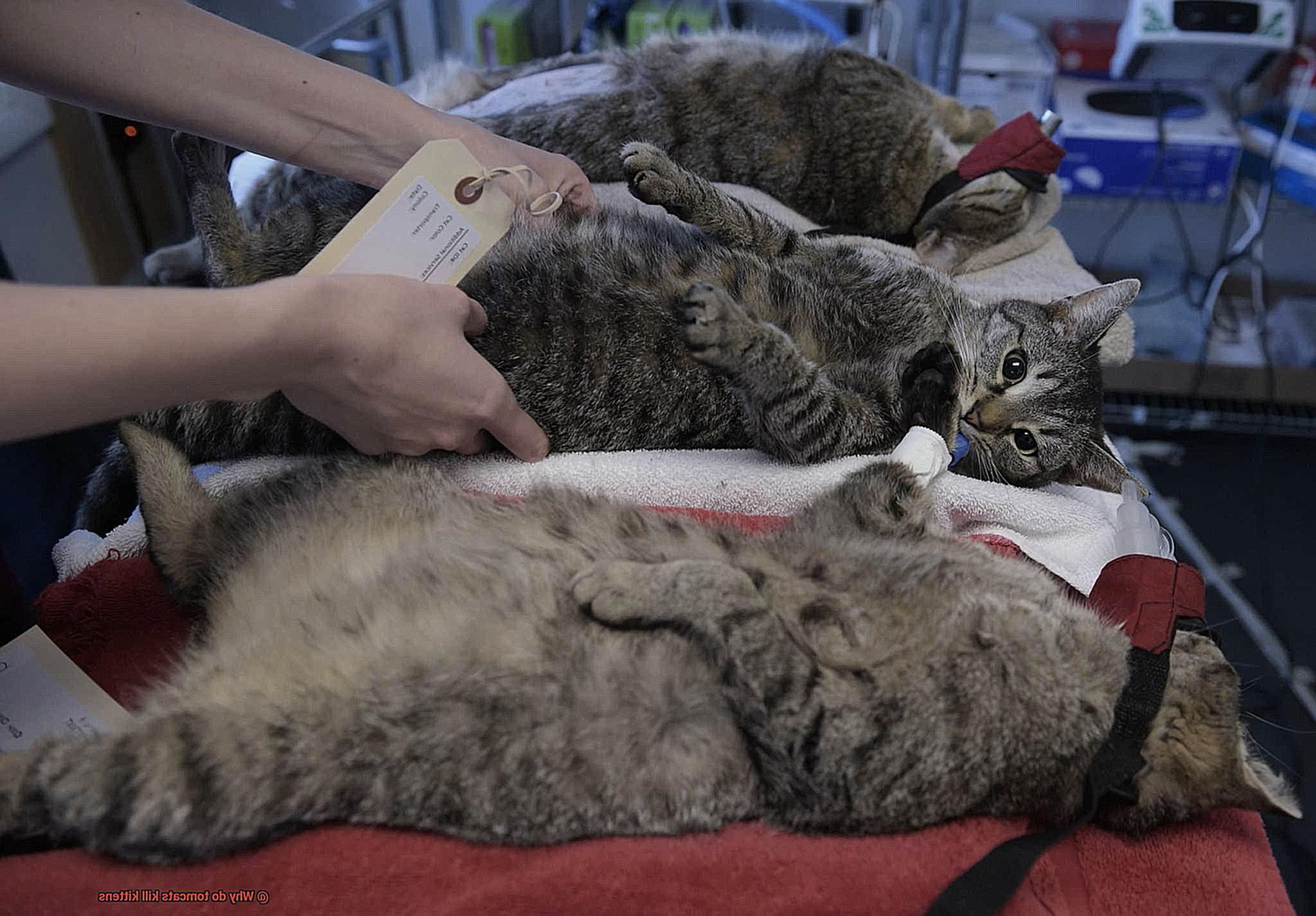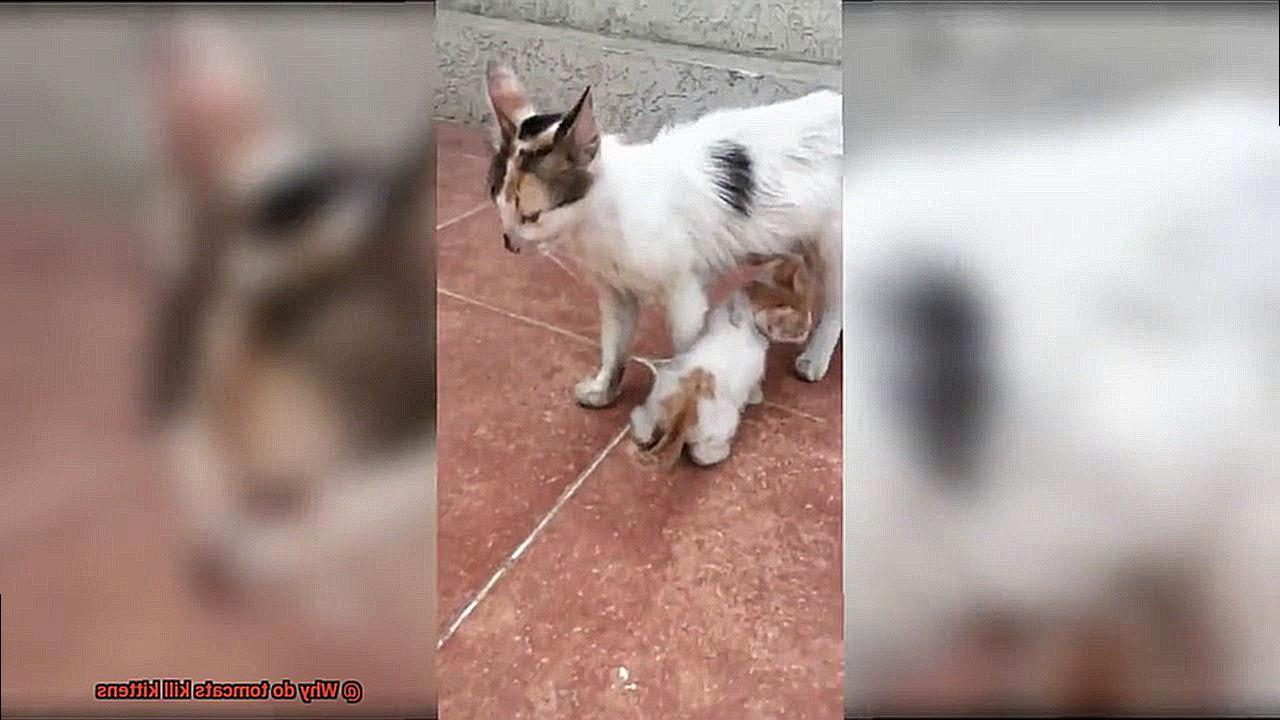Cats are natural predators, but when a tomcat kills kittens, it can be a disturbing and perplexing event for cat owners and animal lovers alike. However, there are several factors that contribute to this behavior, and understanding them is key to preventing it.
In this article, we’ll delve into the reasons behind kitten killings by male cats. From territorial disputes to reproductive instincts, we’ll explore the complex interplay of factors that lead to this troubling behavior. We’ll also discuss the potential risks to both the mother cat and her litter, as well as preventative measures that can be taken.
If you’re a cat owner or simply curious about feline behavior, keep reading for valuable insights into why tomcats kill kittens. Whether you want to protect your own feline family or deepen your understanding of these fascinating creatures, this article is sure to provide some eye-opening information.
What is Infanticide?
Infanticide is a fascinating yet controversial topic that describes the act of an adult animal killing its own young. Although disturbing to humans, it’s an innate behavior that has evolved in many animal species over time. One species that exhibits this behavior is tomcats, which can occur when a new male enters a territory and kills existing kittens to increase his chances of mating with the female cat.
Tomcats are known for their territorial nature and will do whatever it takes to defend their territory, including killing other cats, including kittens. However, infanticide is not just an act of cruelty but is also an evolutionary adaptation that ensures the survival of the fittest. In the wild, tomcats will often kill the kittens of other males to eliminate competition and increase their chances of mating with the female.
Infanticide can also occur due to stress or anxiety. Tomcats that are stressed or anxious may exhibit aggressive behavior towards other cats, including kittens. This can occur if the cat’s environment changes suddenly, such as introducing a new cat to the household or moving to a new home.
Additionally, tomcats may kill kittens if they are sick or injured as they are instinctively programmed to identify and eliminate anything that appears weak or vulnerable.
It’s important for cat owners to understand why tomcats may kill kittens in order to prevent such incidents from occurring. Providing a safe and stable environment for cats, as well as monitoring their behavior closely, can help reduce the risk of infanticide and aggressive behavior towards kittens.

Infanticide can have significant effects on the population dynamics of feral cat colonies. When a male cat kills kittens, it reduces the number of offspring that will grow up and reproduce, which can lead to a decline in the population. However, it can also have the opposite effect if the new male successfully mates with the female and sires more offspring.

Stress and Anxiety as a Cause of Kitten Killing

Cats are creatures of habit and routine, and any sudden changes in their environment can cause stress and anxiety. This stress can manifest in various ways, including aggression towards other animals, such as kittens. As a cat owner, it is crucial to understand that stress and anxiety can be significant factors in tomcat killing kittens.
For example, if you introduce a new kitten to the household, the resident tomcat may feel threatened or territorial and lash out at the newcomer. Similarly, disruptions in your cat’s routine, such as changes in feeding times or location, can cause stress that may lead to aggressive behavior towards kittens.

As a responsible cat owner, it is essential to recognize the signs of stress in your cat, such as excessive grooming or hiding behavior. Addressing stress promptly is key to preventing aggressive behavior towards other animals. Providing a secure and stable environment for your cat is crucial, as it helps reduce stress levels and prevents unwanted behavior.
Introducing new animals gradually is an excellent way to help reduce stress. Positive reinforcement is also vital when your pets interact positively with each other.
If you notice that your cat’s aggressive behavior persists despite your efforts, consulting with a veterinarian or animal behaviorist may be necessary to address the issue effectively.
Sickness and Injury as a Cause of Kitten Killing
However, sickness and injury can sometimes strike, leading to unexpected and aggressive behavior – including kitten killing.
Tomcats who are sick or injured may feel threatened by the presence of kittens, causing them to lash out in fear or pain. To make matters worse, they may view the kittens as competition for resources and eliminate them as a result. These behaviors are instinctual and often beyond the control of the tomcat.
In addition to these direct causes, sickness and injury can also affect a tomcat’s behavior in subtler ways. For example, a respiratory infection or broken leg can cause discomfort, leading to irritability and aggression towards other animals.
But don’t despair – as a responsible pet owner, there are steps you can take to prevent these situations from occurring in the first place. Regular check-ups with a veterinarian can help detect and treat illnesses before they become serious, while prompt treatment of injuries can minimize pain and prevent complications that could lead to aggressive behavior.
Moreover, providing your cat with proper care and attention is essential to their overall wellbeing. Ensure they receive nutritious food, plenty of water, and an appropriate living space that promotes their physical and mental health.
Prevention Strategies for Cat Owners
The thought of a tomcat attacking your kittens is undoubtedly distressing, but there are several proven prevention strategies you can implement to keep them safe.
The first step is to keep your female cat indoors during her heat cycle. This straightforward measure prevents male cats from entering your property and attacking your kittens. Spaying or neutering your cats is also crucial in preventing tomcat attacks. A neutered tomcat will experience less aggression towards other cats, including kittens, while spayed female cats won’t attract male cats to your property.
Creating a safe and secure environment for your cats is likewise crucial in preventing tomcat attacks. Make sure that your outdoor cats have access to a secure shelter where they can retreat when they feel threatened.
Additionally, remove any potential dangers from the property, such as sharp objects, toxic substances, or other animals that pose a danger to your cats.
Regular veterinary check-ups are also essential in preventing tomcat attacks. Your vet can identify any underlying health issues that may make your cat more vulnerable to attacks and provide appropriate treatment.
Finally, supervising your cats when they are outside is critical to prevent unwanted encounters with other cats, including tomcats. If you see any aggressive behavior towards your kittens from other cats, remove them from the situation immediately and seek veterinary care if necessary.
Signs of Aggression in Tomcats
One of the most crucial steps in ensuring their safety is to understand the signs of aggression in tomcats. Aggression in male cats can be triggered by a variety of factors, such as fear, territoriality, and social hierarchy. Although not all male cats exhibit aggressive behavior towards kittens, it is still imperative to stay vigilant and recognize potential signs of aggression.
So, what are some common signs of aggression in tomcats? Hissing, growling, flattened ears, raised fur, and bared teeth or claws are all indicators that the cat may feel threatened or uncomfortable and is preparing to defend himself. If a tomcat displays these behaviors towards other cats, it may also signify social hierarchy or territoriality.
As a responsible pet owner, it is essential to monitor your cats’ behavior and intervene if necessary. If a tomcat shows signs of aggression towards kittens, separating them for their safety may be necessary. Additionally, neutering or spaying the cat can also help reduce aggressive behavior in male cats.
Preventing harm to your adorable kittens is paramount. By recognizing signs of aggression in tomcats and taking appropriate action, you can promote a safe and peaceful living environment for all pets.
How to Handle an Aggressive Tomcat
Protecting Kittens from Aggressive Tomcats
As a cat owner, you want to provide a safe and comfortable environment for your feline friends. However, when aggression arises in tomcats towards kittens, it can be challenging to manage. Aggression in tomcats can stem from various causes such as territorial instincts, fear, or hormonal changes. In this article, we will outline five effective ways to handle an aggressive tomcat around kittens.
Identify the Root Cause of Aggression
Understanding the root cause of aggression is essential in addressing the issue effectively. In some cases, aggression towards kittens may be due to underlying medical conditions such as pain or discomfort. If this is the case, seeking veterinary intervention is essential to address the underlying medical issue and prevent any harm. Additionally, if the tomcat is a stray or feral cat, it may display aggression towards anything in its territory, including kittens.
Neuter or Spay Your Tomcat
Neutering or spaying tomcats can help reduce aggression levels and territorial behavior in cats. It also helps to prevent unwanted litters and reduces the risk of certain diseases. Seeking advice from a veterinarian on neutering or spaying your tomcat can be helpful in managing its aggression towards kittens.
Establish Boundaries and Rules
Establishing boundaries and rules for the tomcat’s behavior towards the kittens is crucial. The owner should supervise interactions between the tomcat and kittens and intervene if necessary. Punishing the tomcat for aggressive behavior towards kittens is not recommended as it can lead to further aggression. Providing separate spaces for the tomcat and kittens can help minimize conflict.
Redirect Attention Away from Kittens
Redirecting the tomcat’s attention away from the kittens can be helpful. Providing toys or activities that engage the cat’s attention can distract it from being aggressive towards the kittens. For instance, playing with a feather toy can help divert their attention and prevent any harm to the kittens.
Seek Professional Help
If the tomcat’s aggression towards kittens persists despite these measures, seeking professional help from a veterinarian or animal behaviorist is recommended. They can provide further guidance on how to handle an aggressive tomcat and prevent harm to the kittens. Professional help may also be necessary if there are signs of injury or illness in either the tomcat or kittens.
2zi54zQL6mo” >
Conclusion
To sum up, comprehending why tomcats kill kittens is essential for cat owners and animal enthusiasts. Although it may be a disturbing occurrence, there are several reasons that can lead to this aggressive behavior. Territorial disputes, reproductive instincts, stress, anxiety, sickness, and injury are all contributing factors.
To prevent kitten killings by male cats, it is crucial to provide a secure environment for your feline friends. Keeping a close eye on their behavior and seeking veterinary care when necessary can also help. Spaying or neutering your cats can also reduce aggression levels in male cats.
Recognizing the signs of aggression in tomcats is vital to ensure the safety of your kittens. Hissing, growling, flattened ears, raised fur, bared teeth or claws are all indicators of potential danger.
If you have an aggressive tomcat around kittens, identifying the root cause of aggression is key to addressing the issue effectively. Setting boundaries and rules for the cat’s behavior towards the kittens can help minimize conflict. Distracting the cat with toys or activities can also redirect its attention away from being aggressive towards them.
Ultimately, keeping your adorable kittens safe requires constant vigilance and proactive measures by cat owners.







